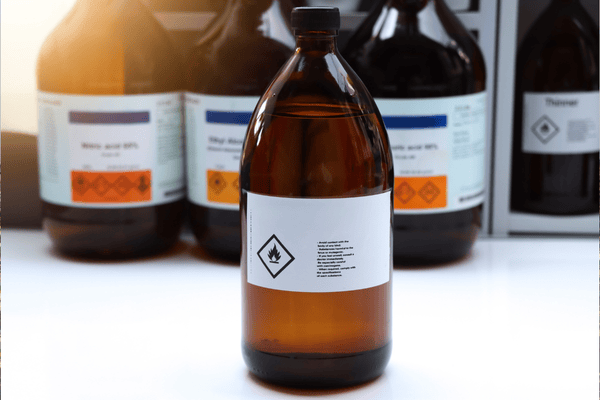With more than 45 years of experience, Dell Tech supports companies in properly classifying raw materials for regulatory compliance and product safety. Our team helps ensure accurate GHS classification, reliable SDS authoring, and correct identification for hazardous product shipping. Mistakes at this stage can lead to legal risk, product delays, or user harm. We provide expert support to help you avoid those risks through reliable classification from the start.


Incorrect classification of raw materials can result in a range of serious consequences. This includes non-compliant Safety Data Sheet authoring, improper labeling under WHMIS and HCS, and penalties for violations under transportation regulations such as TDG, DOT, IATA, or IMDG. It also increases the risk of harm to end users.
Proper classification must happen before any SDS is created or label is designed. Many SDS automation tools skip this critical step, which creates significant compliance risks. At Dell Tech, classification is never an afterthought. It is where we begin.

Our classification process is built on authoritative global sources and scientifically validated data.
We reference international databases including:
• ECHA, the European Chemicals Agency
• CCOHS, the Canadian Centre for Occupational Health and Safety
• CSST (CNESST), Québec’s occupational health and safety board
• IARC, the International Agency for Research on Cancer
• ACGIH, the American Conference of Governmental Industrial Hygienists
In addition to these resources, we verify toxicological data such as LD50 and LC50 values, the scientific methods used in those tests, and the specific classification rules applied in the country of use. Our team documents evidence to support all classification outcomes, helping you prepare for inspections and audits with confidence.

Raw material classification is the foundation of a compliant Safety Data Sheet. Authors rely on accurate classifications to ensure legal and safe downstream documentation.

Whether you are formulating new products or bringing substances into Canada or the United States, you must meet regional classification and shipping standards to avoid border issues and product holds.

If you are building a brand or white-labeling formulations, proper classification ensures that your product is safe and compliant from the outset. This is especially important if you plan to distribute internationally.

Supplier SDSs are often incomplete, outdated, or written for other markets. Relying on them without verification puts your business at risk. Our process ensures that each material is classified according to current regulatory expectations in Canada and the U.S.
We verify classifications using up to date toxicological data, authoritative regulatory databases, and local legislative frameworks. Every classification we provide is backed by documentation and reviewed by regulatory experts.
Misclassification can lead to serious outcomes including regulatory penalties, rejected shipments, and harm to end users. In some cases, it may even result in product recalls. Proper classification minimizes these risks and protects your brand.
Possibly. While both countries use the GHS system, their implementation differs. Canada requires bilingual SDSs and follows WHMIS 2015/2022, while the U.S. uses HazCom 2012/2024 under OSHA. Dell Tech ensures your classifications reflect the correct regional rules.
Yes. We offer review services for existing documentation and can reclassify substances as needed. If your SDSs were created using software or based on supplier documents, we can identify any issues and provide the corrected classifications.
Contact Us to receive updates on raw material classification standards, regulatory alerts, and chemical safety guidance directly from Dell Tech’s regulatory compliance team.